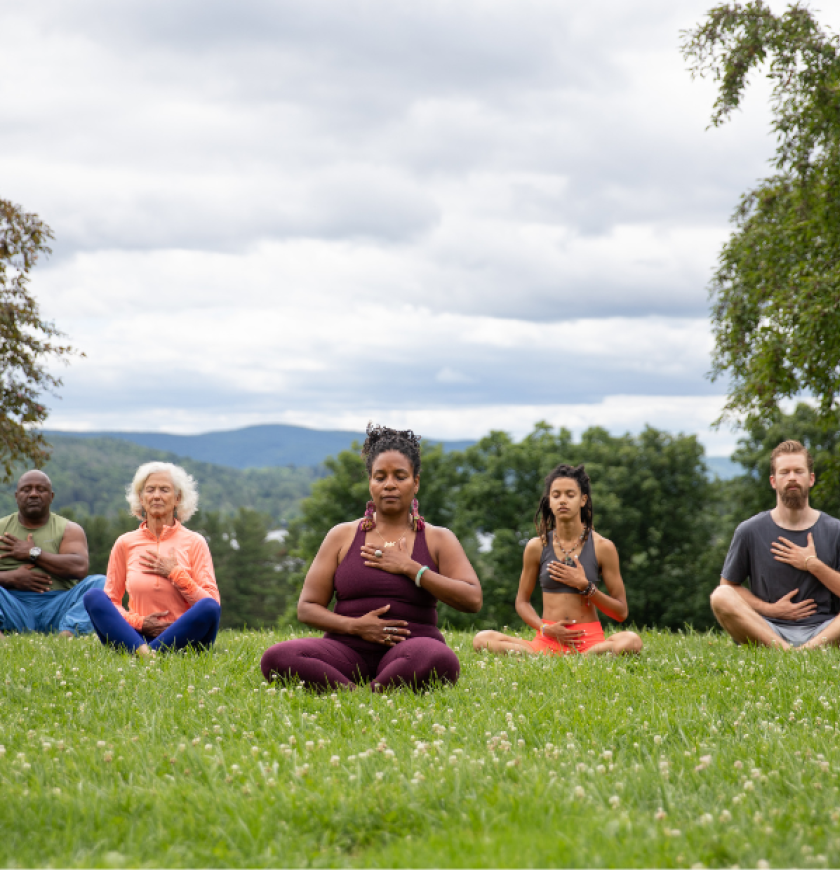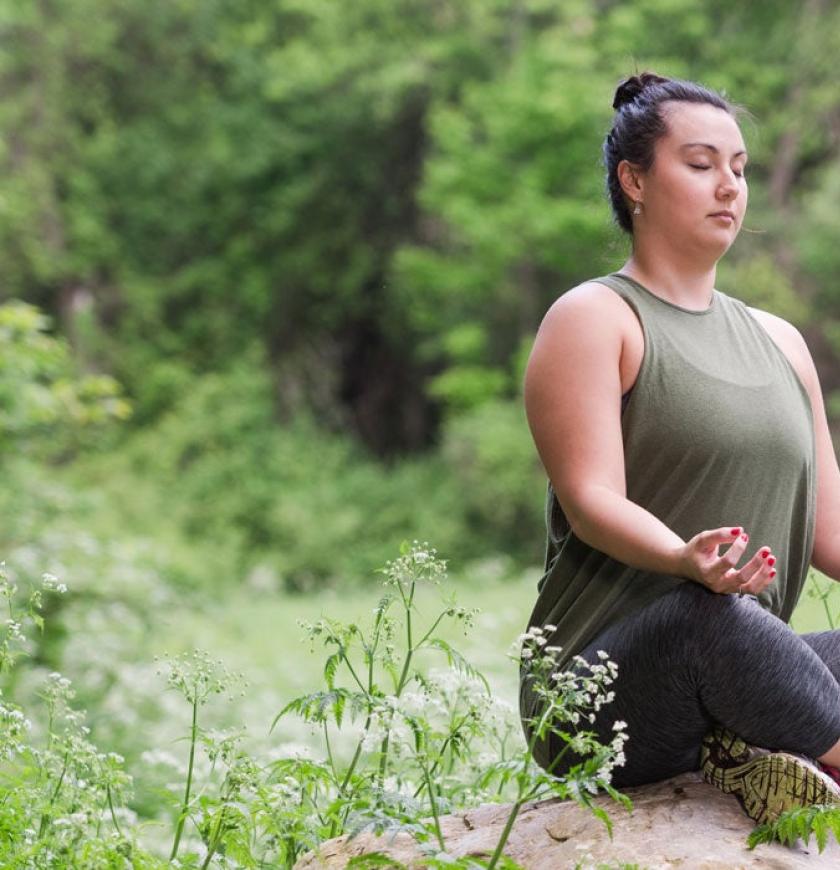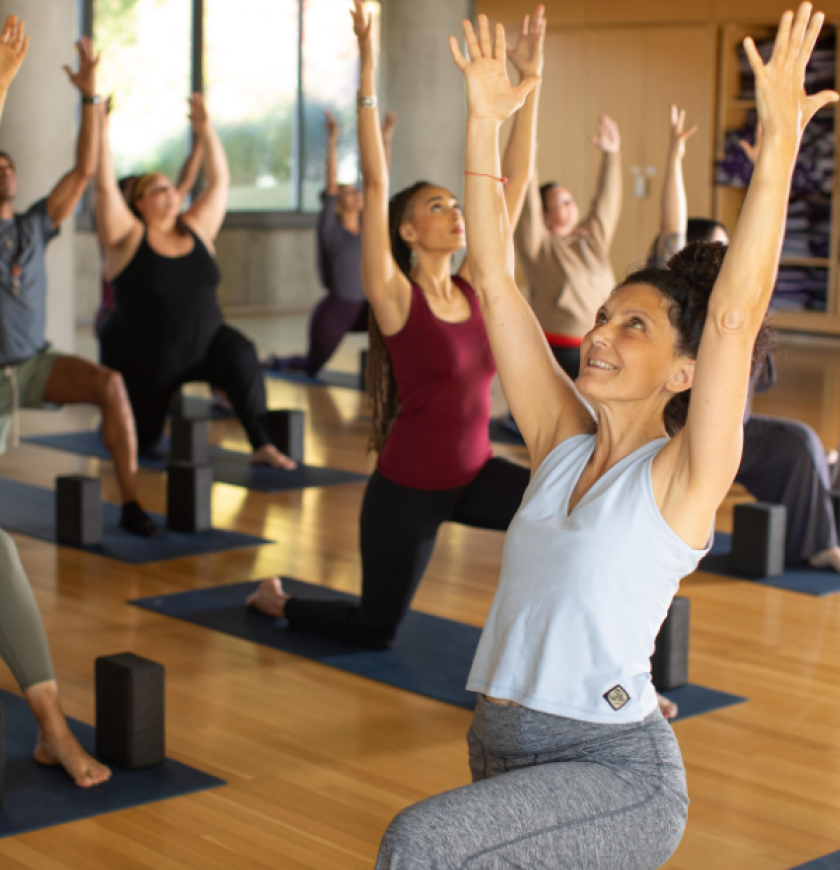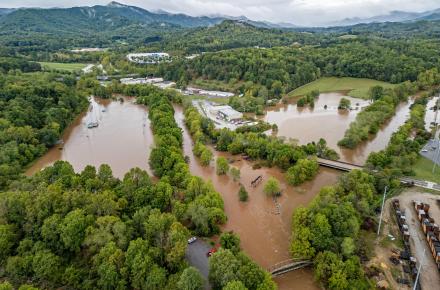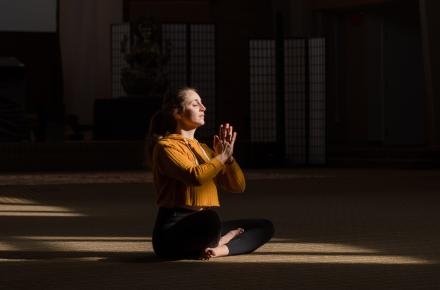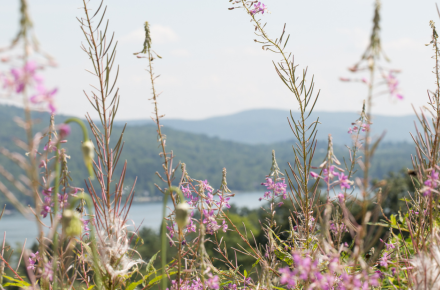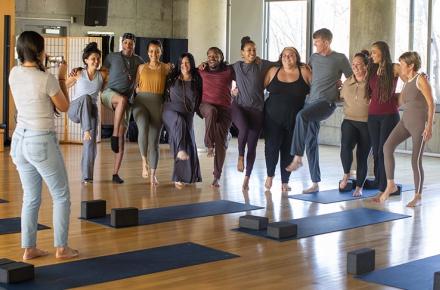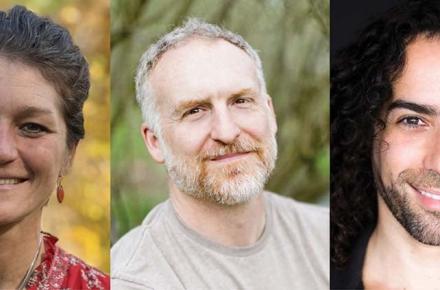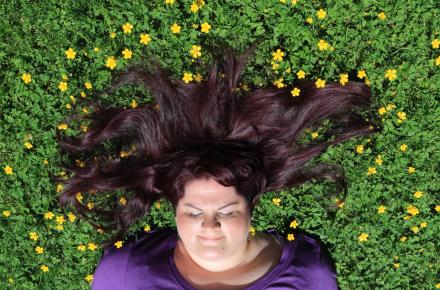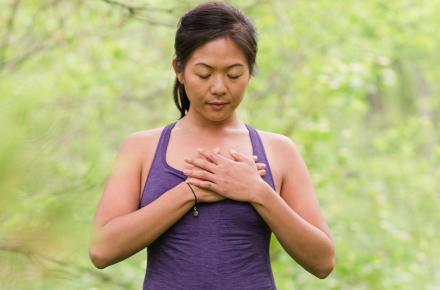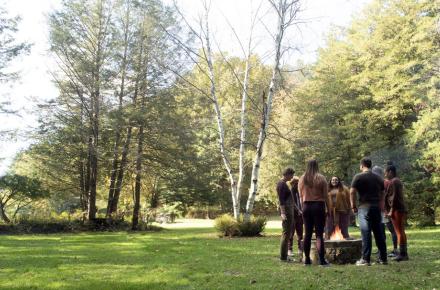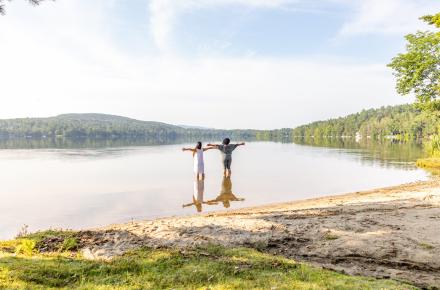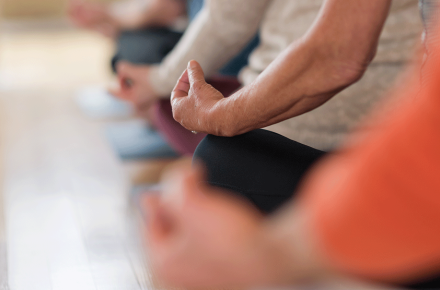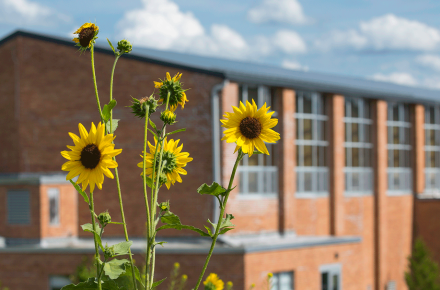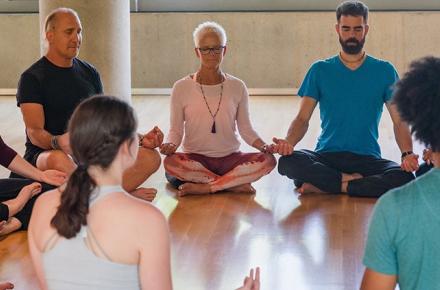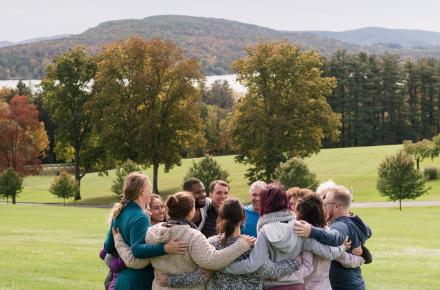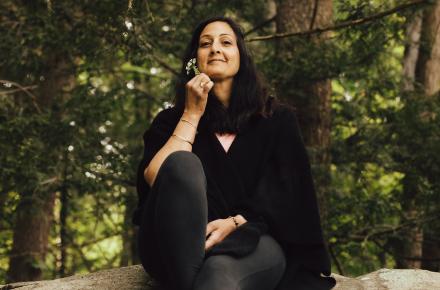Rules for Living Well, Part I & II
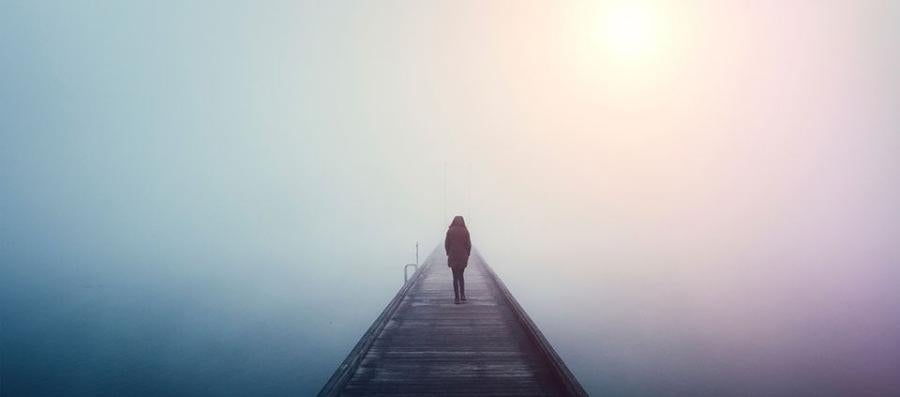
by Laura Didyk
For most of my life, I have carried with me an anxious suspicion that other people received some manual for living when they were born, and I somehow got missed. That said, goodness, reliance on God, and the importance of having a group of loving people with whom to share bounty and depend on through life’s transitions and traumas, are values that were not lost on me growing up. As I got older, however, and life became more complicated, my feelings followed suit, grew more intense and overwhelming. I felt mapless and desperate for direction. The following “rules,” which are more like guideposts lighting my way, were born of emotional despair, experimentation, hard work, a whole lot of help, and an enormous and burning desire to enjoy my life while it is still here.
1. Don’t let feeling bad get in the way of growing up (a.k.a. keep on keepin’ on)
One Sunday—the day I am most apt to teeter on the edge of an emotional black hole—I was sitting at my desk at home, trying to numb myself by surfing the web and checking my e-mail every three seconds for something that would cheer me up. I kept thinking about the light bulbs that I’d bought weeks before, the special energy-saving ones that Al Gore said in An Inconvenient Truth to buy and twist in and do my part. I thought: I could put those in now. Nah, I thought next, I’ll do it tomorrow. I have high ceilings; it would take actual physical effort to undertake such a project.
Despite feeling like I wanted to crawl under the covers and come out once Sunday had been erased altogether as a day of the week, I finally got up, mad almost at the insistence that I do this today, this moment. I tend to resist daily, grown-up tasks, like balancing my checkbook, getting my Subaru’s oil changed, changing light bulbs. I’d rather sit at my desk and wait for an e-mail telling me that a man with a cape and a ladder is on his way to do it all for me. That Sunday, I tired of waiting and instead dragged my landlord’s ladder in from the hallway and went from room to room, fixture to fixture. No easy task—it involved tiny screws, and glass fixtures full of dust and dead bugs, which if you’re not careful can end up in your eyes, your mouth.
It may have been because of how good it felt to lift and carry a big metal contraption around my apartment. It may have been the climbing of the thing. Or because I imagined that wherever Al Gore was, he was glad he’d gotten through to me. I just know that I felt better. I was no longer standing on the edge of something daunting and dangerous. I was just poised on the rung of a ladder, having done something simple and good I’d been putting off for weeks.
Q: How many competent, single, determined, spirited women does it take to screw in six light bulbs while perched on a borrowed ladder?
A: It takes me, baby, just me.
2. Contemplate what poet Dylan Thomas calls “the force that through the green fuse drives the flower”
This law reigns supreme in my world: I must keep myself inspired, take responsibility for more than the light bulbs. Many times each week, I drive across a bridge that stretches over the Hudson River. This is when I think about Dylan Thomas’ “force, ” his “green fuse” that drives everything; is it driving me now? I wonder, slowing down each time to savor the crossing.
I realize it sounds a little ridiculous, that all it takes is a bridge to set the scene in which to contemplate the wonders of the universe. Each one of us has some activity or place that opens the door to an extra room the mind can breathe in. Sitting by a river does it for me too, or standing at the edge of an open field. But something about being at a bridge’s apex, looking to the left, the right, seeing all that water, allows me to detach easily from my specific personality called “Laura,” to abandon the problem of the hour, let go of planning and figuring out and worrying over, and think instead about how gravitational laws, mathematical nuances, and spiritual forces have collaborated to allow me to be here, me in a human body, walking around on this living, breathing sphere that floats in an indefinable non-thing called space.
When I was younger, this kind of thinking was, unfortunately, the prima materia for anxiety attacks, the playing pieces for a kind of dare-to-dissociate game. I’d think about the earth, about how long the earth has been here, about the strangeness of the human species, how we speak languages, have names, tongues, fingers. I’d become acutely aware of the fact that there was a “me” in here—and, apparently, another me thinking about that me. I thought I was even a little crazy. I had yet to be taught about consciousness so I had no context for the desire both my mind and spirit had to be aware of themselves. Now, this kind of reflection gives me a spacious, relieving, neutral experience of my self, a break of sorts from the heaviness and chaos that a personality can bring to the fore.
I like to think about what drives the flowers upward through the earth, the water out from the mountain, the sap to course through trees. What drives the sun’s constant burning? When we sleep, our hearts continue to beat, our bodies breathe on their own. Instead of attaching to my problems, I cling to this exhilarating experience of being outside of myself, so far out sometimes, that I feel closer than ever to my true nature. I balance on the ledge of my spirit with the perfect view: a vast, complicated, awesome, beautiful thing called a universe spread out before me.
3. Employ loving helpers
While most of us know that answers to our lives’ most troubling questions come from within ourselves, other people can reach gently inside us and dislodge that tiny pebble in the wall we’ve erected around a solution—with the help of a helper, the wall can come tumbling gracefully down.
There came a time several years ago when the simple act of waking up to another day became unbearable. I knew that without help, I wasn’t going to be able to keep going. Why I didn’t ask for help until I literally felt like I wanted to die is something that still eludes me. Two possibilities: 1) I didn’t know how to ask, and 2) I was just too proud. I considered myself brave—I’d done flips on a balance beam, hitchhiked around the country, spent four nights alone in a canyon in the Southwest, driven a moving van across the country by myself. But I was also emotionally needy, intensely absorbed by my own problems and moods, and probably not all that great of a friend. This is no wonder since I had little training in traversing the craggy, sometimes-frightening landscapes within.
Once I broke the asking-for-help ice, it was disturbing to discover just how much help I actually needed. Now, I use all avenues of help possible: therapist, mentors, spiritual teachers, wise friends—people who care about me, have my best interest at heart, are generous of spirit, and know more than I do about living life in a balanced and positive way.
Talking to a power greater than myself—God, a higher power, Spirit, Higher Self, whatever you want to call it—has been vital to my day-to-day operations. Revealing myself to another human being, however, has to be part of that conversation. It’s through other people that God gives me the most help. The most loving thing I’ve ever done for myself, and the most humbling, has been to let other people love, guide, and help me. People are the green fuses. And the force comes through them. And their flowering shows me my own. And my flowering shows others theirs. It’s as if we were all in this together.
Rules for Living Well, Part II
4. Race cars if you want to race cars (a.k.a. be brave)
Okay, so I don’t race cars. But last year I was in a cafe and overheard two women talking. One woman was telling the other about a recent stint she’d done at a race-car camp. She was petite and pretty, with fine, delicate features, and never in a million years would I look at this woman and think: race car. Clearly inspired by the experience, she spoke about the speed and the noise and the being in the car and the exhilaration of the track. Her voice grew louder, bouncier, and more animated the longer she spoke. I wondered how long that woman had wanted to do such a thing. I wondered how much chutzpah it took for her to sign up for camp and go.
One of my biggest fears is that I will come to the end of my life and wish that I’d not let fear get in the way of the things I really wanted to do, that I will feel regret of the worst kind. Almost two years ago now, I was stuck in my house, on my couch, in my head. As a former athlete, I’ve always loved being physical, loved dancing, loved performing. But during this particular time in my life, I’d shut down those urges and grown lethargic. Although I’d never done hip-hop before, when I caught glimpses of it on commercials and in music videos, my body would become something other—half inspiration, half unbearable ache. Instead of grabbing onto the longing like the life preserver that it was, I told myself that hip-hop was for teenagers—I should have tried it when I was younger, when I was in better shape. I told myself it was too late. These sentiments came courtesy of that inner voice-mail service I’d set up years before; it answered every long-awaited-for call before I could even think about getting up from the couch to answer it myself.
One evening, a friend shared about how much fun her seven-year-old daughter was having in her new hip-hop class. I felt the onset of that unbearable ache. I got a knot in my chest. I felt like I wanted to cry. It took me a few minutes to realize what was happening: I was jealous—deeply unabashedly jealous. Of a seven-year- old.
This was something, I realized, that anyone could do if she just decided to do it.
Flash forward three weeks: sweat pouring down my face; hip-hop beat blasting through the room; eight or so other women my age and older, laughing, stomping and clapping, moving our hips one way and our shoulders the other way. It was the happiest I’d been in a very long time.
If I hadn’t finally peeled myself off the couch and battled my way through the gauntlet of ridiculous, life-oppressing beliefs about what I was and was not allowed to do, I’d still be in my house, wishing my life away, thinking that I shouldn’t long for what I long for, shouldn’t want what I want.
I thank the seven-year-old.
So, we should all race cars if we want to race cars, take hip-hop classes, build things with our hands, teach our talents to others, paint, cook, volunteer, go back to school, play guitar, whatever it is that is calling us closer to the center of our lives. If you hear the call and don’t answer, you’ll never know who or what is on the other end.
5. Pain, sometimes
There might be two or three or four possible routes up a mountain. A person addicted to misery just sees one: the steepest, most obstacle-ridden pathway, which she will climb over and over. She knows its every curve and exposed tree root, knows exactly when and where on the path she will slip on that mossy rock and twist her ankle.
Twisted ankles happen now and then. Pain is going to exist in me. And a little of it is okay. Even when it feels like it is swallowing me whole, I can survive it, especially now that I know that pain doesn’t have to equal suffering. Suffering is when I make a decision each time to walk up that familiar but difficult path. While awareness helps, awareness will not come take my hand and show me the way. A decision has to get made, and I’m the only one who can make it.
That misery-addicted person can stand at the bottom of the mountain and decide to look farther to the right, to the left, can decide to circumambulate the base of the thing and see what her options are. She can tell herself she has a cell phone now and helpers to call if she gets in trouble on the trail. Because who wants to live her life stuck on the side of the mountain with an injured foot? Not me. It’s true that pain is part of what the living must bear—but only sometimes.
6. Accept life’s back and forth by enjoying the space in between
I don’t know exactly what it is about mambo—the steps, the rhythm, when and where you stress the beat with your feet—I just know that after the “1-2-3” and before the “5-6-7,” there is a gap, a pocket of graceful nowness that lets you sink a little in your step and then rise. As your partner guides you through a cross-body lead into a copa into a double turn, there is this: a collaboration of body and air, a soft elevation of spirit. This is the moment, my teacher says, when I should take the opportunity to shine—a flourish of the arm, an unexpected turn of the head, an accent with the shoulders. He says: this is when you get to show everyone what you got.
Or this: On the yoga mat, as we leave Warrior One behind and move intentionally and purposefully toward Warrior Two, we are neither here nor there. We are between the inhale and the exhale. We are the parachute after it has taken all the air it needs into its chute, just before it floats down.
In the gap is where we gather our poise, collect our energy, and, sometimes, experience the longed-for weight of our own beauty.
7. Wear all rules and guideposts like a loose, translucent robe
If I have learned one thing, it is this: discipline is good and principles are vital, but it is how I treat myself in the midst of difficulty that matters most. A year or so ago, I was distraught, trying to deal with a problem for which I was, without question, to blame. I asked a friend what I should do. “Well…,” he said, pausing, considering, “I think you just have to be really, really kind to yourself.”
Kind? But I’m terrible. I totally screwed up. I suck. Welcome to life, he said. Welcome to the human race. We are imperfect and we make mistakes and if we bludgeon ourselves in the midst of them, we will glean very little from the experience. To be kind to ourselves when we feel the least worthy of that kindness is one of the most radical things we can do.
I’ve just written these seven “rules,” and they help me face difficulty with dignity and poise. The risk is that I can parcel my life into good and bad, right and wrong, healthy and unhealthy, and in the process, I forget the point, which is, after all is said and done, a newfangled kind of love—for myself, for those around me, for people I don’t even like all that much. So when I start to feel claustrophobic for all the rules I’ve imposed on myself, all the expected perfection, I find the nearest metaphysical dressing room and don the lightest, loosest garment
I can find.
Laura Didyk, MFA, is an essayist, poet, and a former athlete with a lifelong passion for nutritional health and optimal living. She has had her work published in literary magazines throughout the country, and has been awarded fellowships at Yaddo, the MacDowell Colony, and the Virginia Center for Creative Arts.
© Kripalu Center for Yoga & Health. All rights reserved. To request permission to reprint, please e-mail editor@kripalu.org.
